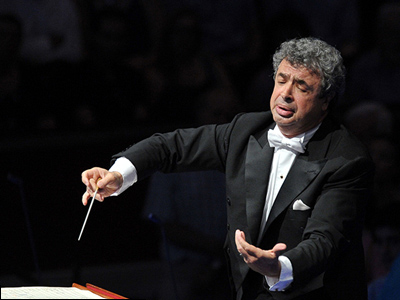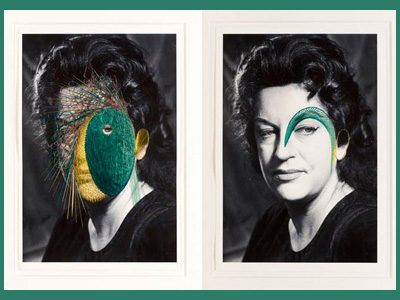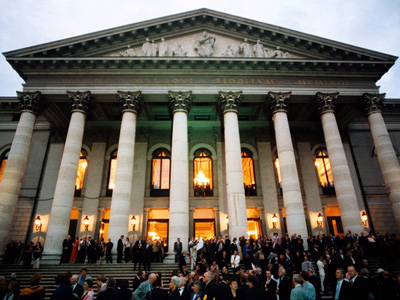
By ANDREW POWELL
Published: June 25, 2015
MUNICH — 2014–15 has been a rough transitional season for the Munich Philharmonic. Lorin Maazel’s sudden resignation a year ago forced its managers into much recasting, and some feeble programs. Then, midseason, came worse news. An irksome pact between Munich’s Bürgermeister Dieter Reiter and Bavaria’s Minister-Präsident Horst Seehofer nixed plans for a needed new concert hall to replace the Gasteig and instead envisioned a joyously slow disemboweling and inner rearrangement of that acoustically poor facility, which would leave the MPhil homeless starting in 2020. The pact sent Anne-Sophie Mutter, Christian Gerhaher and Mariss Jansons into public displays of betrayal, rage and frustration, respectively. But MPhil managers could not whine so loudly because the city owns the orchestra, so, a week behind everyone else, including the testy Bavarian Radio Symphony Orchestra (also affected), they emitted six splendid bureaucratic paragraphs saying absolutely nothing.
Somehow the musicians have ploughed through this temporum horribilis and on Monday (June 22) managed to sound confident and poised at the Gasteig under Semyon Bychkov. Grandly he propelled them in Brahms’s Third Symphony (1883) stressing contrasts and drama with wide arm gestures. Fine wind contributions, not least from principal horn Jörg Brückner, flattered the score’s textures, and Bychkov took a pleasingly weighty and leisurely approach to the middle movements, observing dynamic markings with care. Ravel’s G-Major Piano Concerto (1931) after the break found everyone on less sure footing, however, despite this being the program’s third iteration. Jean-Yves Thibaudet gave a dull, woolly account of the solo part. Ensemble weakened. The long concert remained in French mode for its conclusion, Debussy’s La Mer (1905), but this listener had to run.
Tomorrow, the same partnership performs in the Pala de Andrè as a guest of the Ravenna Festival. MPhil 2014–15 closes fully with concerts here led by Kent Nagano and Krzysztof Urbański, but in September more headaches loom when Valery Gergiev takes over as Chefdirigent. Systems are supposedly in place to prevent the skimpiness of preparation associated with the new boss. It is unclear what, if any, measures are in place to cope with the political challenge.
Photo © Chris Christodoulou
Related posts:
Trifonov’s Rach 3 Cocktail
Stravinsky On Autopilot
On Wenlock Edge with MPhil
Mastersingers’ Depression
Modern Treats, and Andsnes



Magelone-Romanzen on Disc
Monday, October 16th, 2017By ANDREW POWELL
Published: October 16, 2017
MUNICH — Sony has released a remarkable recording of Brahms’s Magelone-Romanzen, Op. 33, complete with Zwischentexte prepared by German author Martin Walser. Christian Gerhaher sings the fifteen songs and recites two of the other three poems (the 1st, 16th and 17th) from Ludwig Tieck’s 1797 narrative not set to music. Walser, 87 at the time of the recording, reads his own choice of eloquent, plain words, condensing Tieck’s eighteen-section prose while still advancing the tale and earmarking each song, as Brahms would have expected. Between the two of them, the German language has never sounded more beautiful. Gerold Huber accompanies. Sessions stretched over five days, at Bayerischer Rundfunk here, an indication of the care taken. This 93-minute, 2-CD release, with booklet essay and Romanze texts in German only, has EAN 088985 3110223 and ASIN B01NA7L2AN and must be distinguished from the widely reviewed single-disc issue omitting Walser’s work. Essential listening.
Images © StadtMuseum Bonn, 1865 wood engraving after a drawing (Brahms); 1838 oil on canvas by Joseph Karl Stieler (Tieck); Gregor Hohenberg (Gerhaher); Marion Koell (Huber); Philippe Matsas (Walser)
Related posts:
Fall Discs
Tutzing Returns to Brahms
Time for Schwetzingen
Liederabend with Hvorostovsky
Gergiev, Munich’s Mistake
Tags:Bayerischer Rundfunk, BR Klassik, Brahms, CD, Christian Gerhaher, Commentary, Die schöne Magelone, Gerold Huber, Kritik, Magelone-Romanzen, Martin Walser, Review, Sony Classical, Tieck
Posted in Munich Times | Comments Closed